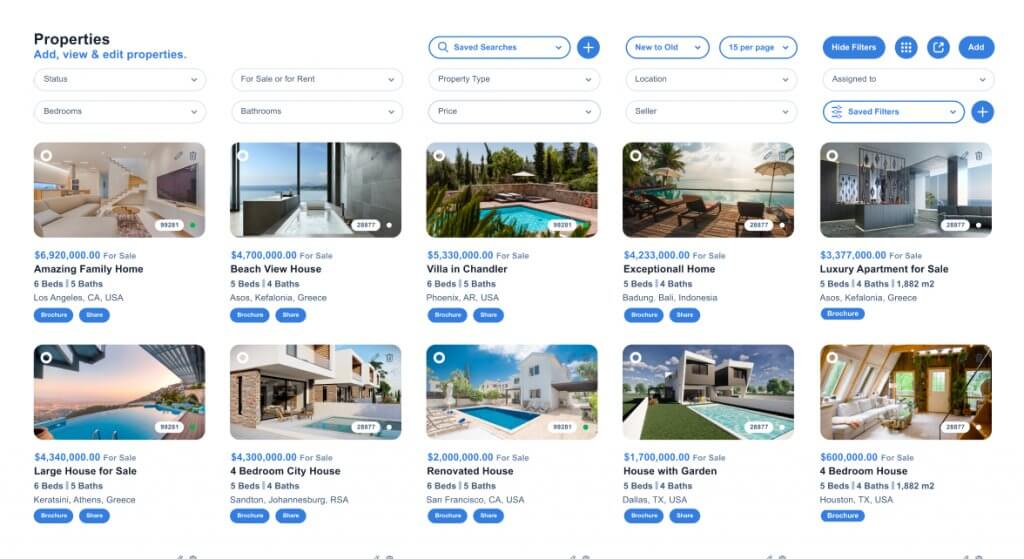The shift to remote work has had a profound effect on the real estate market. Less people are looking for office space and there is an increase in the demand for residential and multifamily housing. The pandemic has altered our perceptions of where we live and work and the real estate market is rapidly being reshaped. This article will explain how real estate professionals and investors will need to adapt to the changing market and take advantage of the opportunities that remote work provides.
Table of Contents
- Is the traditional 9-5 model dead?
- How has remote work impacted commercial real estate?
- Companies will reconsider the properties they own and rent
- The housing market is still hot
- How remote work has changed residential living
- People are leaving big cities
- Houses are changing
- Home offices are a necessity
- More real estate processes are done remotely
- Conclusion
Is the traditional 9-5 work model dead?
Businesses are adjusting as a result of employee requests for a more flexible work schedule and a healthy work-life balance. A report by Regus found that 27% of employees working at the office regard their commute to work as a waste of time and over 20% of employees have thought about quitting their jobs due to lengthy commutes.
In a survey by Owl Labs, 77% of respondents said they would be happier if they could telecommute. Even though not everyone benefits from telecommuting, those who do so claim to be more productive than they would be in a conventional workplace. Real estate brokers recognize that businesses are no longer searching for a big office complex for their employees. For people who choose to work outside the house, some businesses are providing a network of less conventional, smaller workplace choices that combine a quick commute with a professional work environment. To offer a comfortable workspace, those in the real estate industry must be prepared to adapt and evolve with the times.
How has remote work impacted commercial real estate?
The rise of remote work has had a tremendous impact on commercial real estate. Recently, many companies have made the switch to remote work. Employees can now work from home or anywhere else with an internet connection. Businesses no longer need to lease large office buildings for their staff – this shift has led to a decrease in demand for office space. The effect of this decrease in demand for office space has been felt across the commercial real estate sector. As businesses no longer need to lease large office spaces, there is a decrease in revenue for commercial landlords. This decrease in revenue could lead to rent increases, as landlords attempt to make up for their losses. Remote work has resulted in a shift in the types of commercial real estate in demand.
Remote work has increased demand for industrial real estate
While office space is no longer as popular as it once was, there is an increased demand for warehouses and other industrial real estate. As businesses transition to online shipping and fulfillment, this shift has been beneficial for landlords of industrial real estate. They are now able to charge higher rents due to the increased demand.
Business travel has decreased, putting pressure on the hospitality industry
The impact of remote work on the hospitality industry has been significant. With more and more people working from home, there has been a decrease in the demand for business travel and a corresponding drop in revenue for hotels and other hospitality businesses. This has forced many hotels to lay off staff and cut back on services in order to stay afloat. Additionally, the rise of remote work has also led to a shift towards more flexible and affordable forms of accommodation, such as vacation rentals and home-sharing services. This has put further pressure on traditional hotels and the hospitality industry as a whole. Overall, the rise of remote work has had a major impact on the hospitality industry and has forced businesses to adapt and find new ways to stay relevant and profitable.
Remote work has impacted the way offices are designed
Finally, the rise of remote work has also had an impact on the way commercial real estate is designed. Companies no longer need to lease large office spaces and are now able to focus on smaller, more efficient workspaces. This has led to an increased focus on designing workspaces that are conducive to productivity and to offices that can accommodate remote workers.
From a decrease in demand for office space to an increase in demand for industrial real estate, and from rent increases to new designs for workspaces, the rise of remote work has had a significant impact on commercial real estate.
Companies will reconsider the properties they own and rent
Office space makes up a large portion of commercial real estate, which is used by white-collar office workers. However, nowadays, working from home is an option for any task that can be completed on a laptop. It is no longer necessary for many professions to be performed in physical offices.
Reducing the real estate footprint
Businesses that own their office space or those that rent or lease them are rethinking how to use them. Larger workspaces now seem unnecessary because many firms have enforced a hybrid or remote work policy.
There is no longer a requirement for an office space that can accommodate all employees. Businesses have the option to reduce their real estate footprint and are doing so. They are choosing smaller offices because workers are no longer present at the same time. This will spare these companies the price of maintaining an office space, especially if it’s in a busy downtown area. They may also decide to move to a less populated area because it is far less expensive. This would be advantageous for such organizations since a substantial portion of their employees would be remote. The remainder would simply work a few days per week in-person.
Many individuals are working from home as a result of the COVID-19. Since precautions have started to ease, some have gradually returned to the workplace. However, many haven’t. This has given rise to the hybrid model, where workers only physically attend a few days a week. Additionally, office days are spaced out so that not everyone is there at once.
Shorter leases and expanded co-working spaces
With a reduced number of staff in the office at one time, businesses may want to reassess how they are using the space to save money. Shorter leases are one way that landlords may get ready for this transformation. Another choice is the expansion of co-working spaces that are big enough for social distance and using flexible places that may be booked on an hourly, daily, or weekly basis.
The housing market is still hot
The pandemic has changed where people are looking to purchase, but it hasn’t really slowed down home buying. Regardless of these changes and the clear impact that remote work has had on real estate, people are still buying property…Just in different locations.
How remote work has changed residential living
The buying of residential homes has evolved, much like commercial real estate, as a result of remote employment. Now with 62% of workers between 22-65 working from home, homebuyers are given more flexibility to choose the neighborhood and style of home they like without having to take commuting into account. As a result, the real estate industry has significantly surged towards rural living, particularly generating housing competition in small towns and suburbs.
A key impact of remote work on residential living has been prioritizing costs
Buyers are faced with impossible bidding prices in a market with insufficient resources to fulfill demand due to the increase in housing prices by more than 30% over the past two years and the shortage of inventory of over 3.8 million houses. Due to the shortage of properties in cities, prices are still high, leading purchasers to look at less expensive homes outside of urban areas. Additionally, buyers looking to recoup and safeguard their money following pandemic losses consider rural places to be more reliable economically in terms of tax or insurance rates. More than ever, people are urged to rent or buy in previously less popular areas.
Lower rents and fewer offices are being constructed
With many people now choosing remote work, the demand for office space has decreased significantly. This has resulted in lower rents and vacancy rates, as well as fewer office construction projects. At the same time, the demand for residential real estate has increased. With more people working from home, many are now looking for larger homes with more space for an office and other amenities. This has resulted in an increase in the demand for single-family homes, and an increase in the price of these homes.
The real estate market is also seeing an increase in demand for multifamily housing, such as condos and apartment buildings. With more people looking for rental properties, landlords and developers are now investing in these types of properties. This has resulted in an increase in rental rates and an increase in the supply of rental properties.
People are leaving big cities
Before the pandemic, first time homebuyers mostly considered price along with their workplace location as the main factors for buying a new home.
Since most individuals commuted to work every day before the pandemic, they needed to live close to where they worked. People chose to live downtown, or at least within a half-hour of a big city, where the biggest concentration of businesses were. Pre-pandemic, the typical travel time to work was just under 28 minutes.
However, more people than ever before have commutes that last only 10 seconds or less—roughly the time it takes for them to go from their home computer to their coffee maker!
Employees won’t have to worry about moving near to their downtown jobs because of this. As a result, since 2020, real estate experts have observed a change in remote work and real estate as individuals leave major cities.
The residential real estate market will continue to see ongoing change
Suburbia has suddenly gained an influx of buyers from major cities, altering not only the real estate but demographic landscape by bringing more income to smaller towns. However, because to the lack of inventory, these innovations also cause a dramatic increase in housing prices, which are already high.
This is a major factor in the recent population growth in so many suburbs, which has boosted housing costs while decreasing housing supply as remote work and real estate adjust to the requirements of the time.
Smaller cities and suburbs are seeing a huge influx of interest. They seemingly have a better quality of life at a better cost of living. This is motivating people, especially first-time buyers, to seek such properties and real estate opportunities out.
With the rise of remote and hybrid work, the residential real estate market will continue to see ongoing change as more individuals come to understand that they are not necessarily required to be tied down to a physical location for their profession and livelihood.
Houses are changing
People who work at least 40 hours per week—and then have a long commute—tend to spend less time at home. However, remote employment has altered this with more people opting to work at home instead of in an office.
Remote work has caused a shift in the real estate market, as more people look to find the perfect balance of work and home life.
This shift has created a massive change in homebuying, as remote workers look for properties that can accommodate their lifestyle.
Homebuyers prioritize their workspace quality at home
There has been a noticeable increase in demand for larger homes with more bedrooms and bathrooms. Working from home requires a certain amount of space. Those who can afford larger homes want to create a dedicated workspace. This has been particularly noticeable in suburban areas, as remote workers look for larger homes with more outdoor space to enjoy. Homebuyers need to prioritize their workspace quality at home. Therefore, more residential properties within the real estate industry need to account for more rooms or spaces to ensure buyers have a separate, private home office.
Homebuyers want better amenities and technology at home
Another impact of remote work on the homebuying market is an increase in demand for homes with better amenities. Working from home means that workers have to be more self-sufficient in terms of their entertainment and recreation. They now seek homes with pools, gyms, and other amenities that can help them stay active and entertained at home. Finally, remote workers are also looking for homes with better access to technology. With more people working from home, having a reliable internet connection is essential for staying connected with colleagues and clients. This has caused an increase in demand for homes with faster internet speeds, as well as homes located in areas with better mobile reception.
Remote work has had a profound effect on the homebuying market, as remote workers look for properties that can accommodate their lifestyle. Whether it’s larger homes with more amenities, better technology or a move to rural areas. Remote workers are looking for properties that can make their home-working experience more enjoyable and productive.
Home offices are a necessity
The need for a home office is another way remote employment and real estate have changed. In 2019, just 6% of individuals had remote jobs. This meant that, like a home gym, a home office was desirable but not expected.
Since then, home offices have become more necessary as distant work and real estate have developed together. According to a survey from the National Association of Home Builders, 63% of today’s buyers want a home office. A separate home office or at least enough space to create one was featured in most property listings in 2022. For the same reason, built-in desks quickly became a major selling factor. Even renters chose two bedrooms over one when looking for flats so they could set up their own home offices.
Given the continued popularity of remote work, you can anticipate that this trend will last for some time.
More real estate processes are done remotely
People today perform a variety of tasks remotely, not only work. They no longer want to leave their homes to purchase a home since they are so used to working from them. It is expected that at least some portions of real estate transactions can be conducted online. Buyers can’t readily travel out of state every time they want to inspect a new house or sign papers. This is especially true when they are relocating across the country. Fortunately, the majority of the real estate process can be completed online. In fact, nearly all buyers used online tools in the search process at 96%. This demonstrates that real estate and remote employment are compatible. For instance, purchasers may search for properties online or get in touch with their realtor through phone and email. They can visit virtual open houses in place of physical ones.
Once consumers decide on a home to purchase, they can sign paperwork electronically. They can communicate with lenders and real estate agents from any location. Thanks to modern possibilities like remote online notarization, they can even participate in an eClosing.
Conclusion
As you can see, during the past few years, employment and real estate have both changed and influenced each other. There is no denying that remote employment is here to stay. The real estate sector must consider how its customers’ behaviors are changing. It is crucial to offer fresh, creative solutions that satisfy their demands. Real estate professionals and investors will need to adapt to the changing market and take advantage of the opportunities that remote work provides. By doing so, they can ensure that they remain competitive and continue to benefit from the real estate market.




